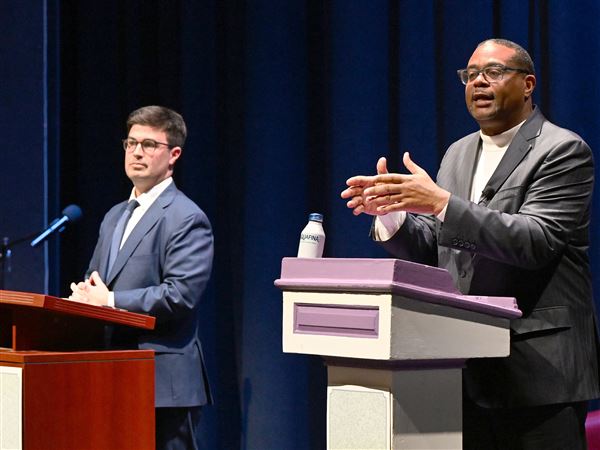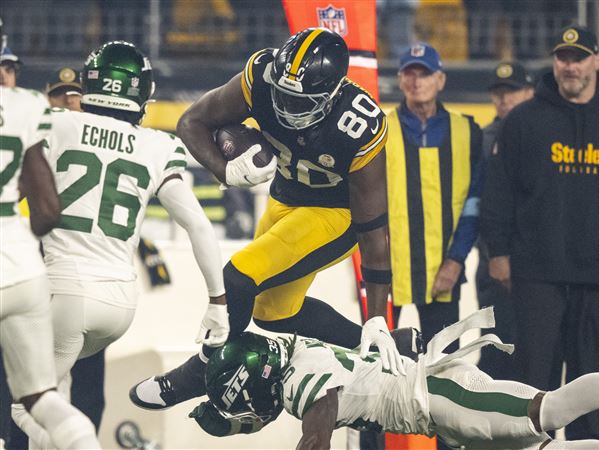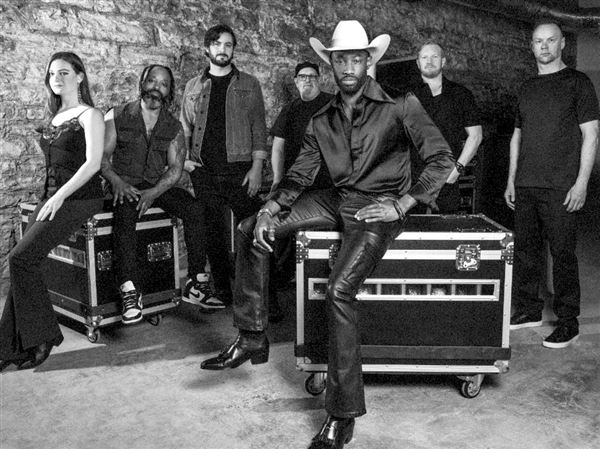SHEPHERDSTOWN, W.Va. -- Theater lovers attracted to the annual Contemporary American Theater Festival know there's so much more to this idyllic community, which was founded in 1734 and is the oldest city in West Virginia.
The college town just across the Potomac River from Maryland is a haven for Civil War buffs, with its proximity to Antietam National Park and other key sites, plus an explorer's delight of historic landmarks, trendy shops and restaurants.
The town has a bridge entrance, a quality that Pittsburghers might appreciate. Drive MD-34 South, passing through quaint Sharpsburg and the Antietam battlefield, and you find yourself on the James Rumsey Bridge that crosses the Potomac. You'll be greeted on the other side, where the road becomes 480, by a "Welcome to West Virginia" sign and the Bavarian Inn, with its sprawling grounds and multiple Tudor buildings. Shepherd University spreads out on both sides of 480 as you continue toward the center of town.
The new-play theater festival that ends today is in its 23rd year and includes five plays chosen by founder and producer Ed Herendeen on the campus of Shepherd, which this year added a new stage venue, the Marinoff Theater, as part of the campus Center for Contemporary Arts buildings. A survey done by the festival estimates that 66 percent of attendees to its adventurous repertory company come from the Washington, D.C., metro area, and visitors add an average of $132 above the price of each ticket to the local economy.
Among Pittsburghers who have made the journey are director Tracy Brigden of City Theatre and actress Robin Walsh, who took part in the festival last summer.
Modern buildings and interiors such as the Marinoff stand in contrast to much of the town that the university grew up around. Founded in the early 1870s as a Jefferson County teachers college, Shepherd is marked by the distinctive clock tower of McMurran Hall on the corner of King Street and German Street, the town's main drag. Among the on-campus buildings that may attract political science buffs is the Robert C. Byrd Center for Legislative Studies, under the direction of Raymond Smock, former historian of the U.S. House of Representatives. The center is an inviting place "to draw on the historical records of Congress and the records of individual members of the House and Senate to gain new insights into the workings of the legislative branch of government," its mission statement says.
Walking a couple of blocks along King Street from the Byrd Center and you arrive on German Street, with the clock tower to your left and facing the whitewashed public library, which was the Old Market House before being transformed in 1921. Every Sunday from April through December, 9 a.m. to 1 p.m., there's a farmers market in open space behind the library.
The 10th-century hub of the town, The Entler Hotel on the corner of German and Princess streets, has been re-created as the town museum after a 1912 fire devastated many of the buildings on the main road. I walked in alone and paid $4 admission, and a well-informed docent carrying a well-behaved poodle explained the history of the site. A hotel was built there in 1786 when Philip Adam Entler bought the land and built the original house on it.
Entler was attracted to the town that was settled by fellow German immigrants and was a hub of commerce. Nearly a century later, it came to be known as a place where its 5,000 residents treated the wounded or buried the dead from the nearby Battle of Antietam. The hotel often housed Union soldiers for the remainder of the war. Behind the hotel in a barn-like building is a half-size replica of James Rumsey's 1787 steamboat, built in Shepherdstown at the behest of George Washington. There are many tributes around town to Rumsey, whose ambition of creating a fleet of steam-propelled boats in America ended in England, where Rumsey was seeking patents and financing and died in his sleep.
The museum website offers a well-mapped and informed walking tour of key buildings in the town at www.historicshepherdstown.com/walking_tour/.
Drive
Shepherdstown is about 31/2 hours from Pittsburgh. Take the Pennsylvania Turnpike east and exit at Breezewood, then follow I-70 East to Washington, D.C.-Baltimore. Take the MD-65 South exit toward Sharpsburg, following Sharpsburg Pike. MD-65 becomes North Church Street. Turn right onto East Main Street/MD-34, which passes the Antietam battlefield and crosses the Potomac River into Shepherdstown.
Stay
The alpine-style, hillside Bavarian Inn near the entrance into town features 72 rooms amid sprawling grounds overlooking the Potomac. Continue a couple of miles up Route 480, past the university, German Street and one of the many historic cemeteries in town, and you'll find the 168-room Clarion Hotel & Conference Center for a more modern but hospitable resting place. Near to the heart of town is the Thomas Shepherd Inn Bed and Breakfast, which was built in 1868 as the parsonage for a Lutheran church.
Restaurants
Coffee is an art form in hot spots such as Hypnocoffee on King Street and Lost Dog on German Street, which is dotted with restaurants and taverns. I ate with large groups at the Yellow Brick Bank (Northern Italian/modern American) and Bistro 112 (French-American dishes made with locally grown produce), and I found my own way to Betty's Restaurant, a Southern diner with a side counter and a menu full of hearty food. China Kitchen on German and King streets is housed on the site of the Sheetz family armory, where three generations manufactured guns and stocks from before the American Revolution until the armory was destroyed during the Civil War. Other restaurants I hope to try on a future trip are a modern, elegant eatery called The Press Room and the Blue Moon and Domestic restaurants, which take advantage of local and seasonal items. Among the taverns in town, the circa-1793 Mecklenburg Inn stays open until 2 a.m., has character to spare and an inviting outdoor courtyard.
Shopping and entertainment
On the Wings of Dreams, a shop that caters to "spiritual journeyers," is part of the former Billmyer Building at the corner of German and Church streets, one of the oldest sites left standing after the war and a 1912 fire. A log building occupied the site in 1776, and a third story and brick facade were added after the Civil War.
There are several shops specializing in funky, fun jewelry and accessories along German Street, including Plum and the Dickinson and Wait Craft Gallery. Four Seasons Books is the kind of family-owned shop many of us have missed since the advent of book super-stores, but there also are shops catering to up-to-the-minute tastes. I was searching for a baseball cap on a hot sunny day and found one on the shelves of the Shepherdstown Sweet Shop Bakery, of all places. It was left over from an event, and I bought it at a steep discount, along with my iced latte to go.
The centrally located Shepherdstown Opera House has been in operation off and on since 1910 and had as its first film "Birth of a Nation." As an attendee of the American Theater Critics Association, I was in the audience last week for a film about West Virginia native and bluegrass pioneer Hazel Dickens and a live concert of her music, followed by the Billy Thompson band playing the songs of Bill Withers, who was born in the mining town of Slab Fork, W.Va.
A good source for checking out lodging, dining, shops and other sites of Shepherdstown is www.shepherdstownvisitorscenter.com.
Side trip: Harpers Ferry
Shepherdstown and nearby Harpers Ferry are stops on the C&O Canal bicycling path connecting Pittsburgh and Washington, D.C. I took a side trip to the site of John Brown's raid with a bus full of theater critics and as we drove up to the entrance to the historic site, our guide pointed out a roadside market that you may have heard of -- it's known as the "Renoir flea market," where a stolen painting by the master was found in a $7 box of knickknacks.
I suggest not going to Harpers Ferry on a 100-degree day, as I did, but the John Brown Museum and some buildings were air-conditioned and the scene at The Point, where the Shenandoah River meets the Potomac, is beautiful. A video presentation takes you through the day in 1859 when abolitionists led by Brown raided the federal armory there but were thwarted by U.S. Marines led by Gen. Robert E. Lee.
I was struck by a museum display that showed how the legacy of violent protest gave way to the more peaceful civil rights movement of the 20th century.
First Published: July 28, 2013, 8:00 a.m.

















